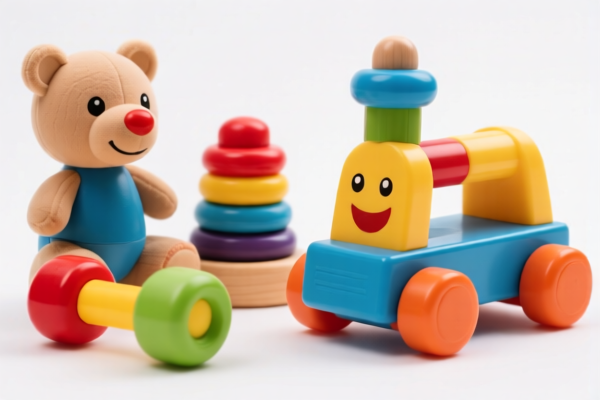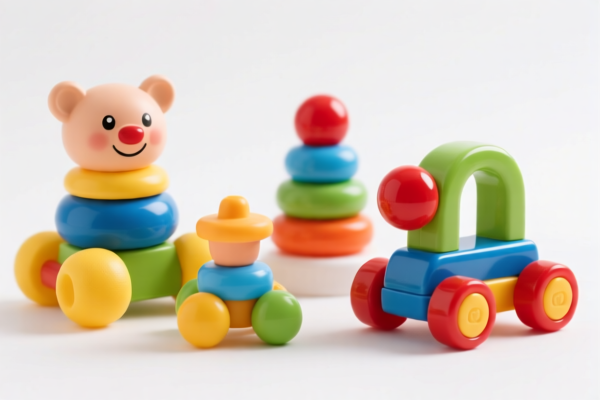| HS Code | Official Doc | Tariff Rate | Origin | Destination | Effective Date |
|---|---|---|---|---|---|
| 9503000071 | Doc | 30.0% | CN | US | 2025-05-12 |
| 9503000073 | Doc | 30.0% | CN | US | 2025-05-12 |
| 8205593010 | Doc | 55.0% | CN | US | 2025-05-12 |
| 8206000000 | Doc | The rate of duty applicable to that article in the set subject t+30.0% | CN | US | 2025-05-12 |
| 8202990000 | Doc | 55.0% | CN | US | 2025-05-12 |
| 8202916000 | Doc | 55.0% | CN | US | 2025-05-12 |
| 6815994170 | Doc | 55.0% | CN | US | 2025-05-12 |
| 6815994110 | Doc | 55.0% | CN | US | 2025-05-12 |
| 3923900080 | Doc | 58.0% | CN | US | 2025-05-12 |




Engineering Track Toys
Engineering track toys are construction sets designed to introduce fundamental principles of physics, mechanics, and engineering to children and hobbyists through building and experimentation. They typically involve assembling tracks, utilizing gravity, momentum, and often incorporating simple machines to create chain reactions and complex pathways for objects – usually balls or cars – to traverse.
Materials
Common materials used in these toys include:
- Plastic: Predominantly ABS plastic for durability, flexibility, and ease of molding into various track components.
- Metal: Stainless steel or alloy components may be used for balls, axles, or structural supports.
- Wood: Some sets utilize wood for base structures or aesthetic elements.
- Rubber/Silicone: Used for grip pads, connectors, or cushioning.
Purpose & Function
The primary purpose of these toys is educational. They aim to:
- Develop Problem-Solving Skills: Users must figure out how to build stable and functional tracks.
- Introduce STEM Concepts: Demonstrate principles like gravity, inertia, momentum, potential and kinetic energy, and simple machines (levers, pulleys, ramps).
- Foster Creativity & Spatial Reasoning: Encourage experimentation and design of unique track layouts.
- Enhance Fine Motor Skills: Assembly requires precise manipulation of small parts.
The function relies on the controlled movement of objects through a constructed pathway. This is typically achieved by:
- Gravity: The most common driving force, utilizing slopes and drops.
- Momentum: Maintaining movement through loops, curves, and obstacles.
- Chain Reactions: Triggering subsequent events through collisions or activations.
Usage Scenarios
These toys are suitable for a range of ages, typically 3 years and up, with complexity increasing with age. Common scenarios include:
- Individual Play: Children experimenting independently to build and modify tracks.
- Collaborative Play: Groups working together to design and construct more elaborate systems.
- Educational Settings: Used in classrooms or STEM workshops to teach physics and engineering concepts.
- Hobbyist Projects: Advanced sets can be used by adults for complex builds and demonstrations.
Common Types
- Ball Run Tracks: The most prevalent type, featuring interconnected tracks for balls to roll through. Often include features like funnels, spirals, drops, and switches.
- Car Tracks: Designed for small toy cars, incorporating loops, jumps, and banked curves. May include launchers or motorized components.
- Marble Run Sets: Similar to ball run tracks, but utilizing marbles instead of balls.
- Chain Reaction Machines (Domino-style): Focus on creating complex sequences of events through collisions and activations, often incorporating other elements like bells or levers.
- Motorized Sets: Include motors to power elements of the track, such as lifts or launchers, adding a more complex dimension.
- Magnetic Track Sets: Utilize magnetic connections for easier assembly and more flexible track designs.
- Building Block Integration: Some sets are designed to integrate with popular building block systems (like LEGO) for expanded creative possibilities.
Engineering track toys fall under several classifications depending on the specific components and intended age of the user. Here's a breakdown of relevant HS codes based on the provided information:
-
9503000071: This HS code covers tricycles, scooters, pedal cars and similar wheeled toys; dolls’ carriages; dolls, other toys; reduced-scale (“scaleˮ) models and similar recreational models, working or not; puzzles of all kinds; parts and accessories thereof, specifically categorized as “Children’s products” intended for use by persons under 3 years of age. This would apply if the engineering track toys are designed for very young children.
- 95: Chapter 95 – Toys, games and sports equipment.
- 03: Heading 95.03 – Toys, games and sports equipment; parts and accessories thereof.
- 000071: Subheading 9503.00.00.71 – Other: Labeled or determined by importer as intended for use by persons under 3 years of age.
-
9503000073: Similar to the above, this HS code also covers tricycles, scooters, pedal cars and similar wheeled toys; dolls’ carriages; dolls, other toys; reduced-scale (“scaleˮ) models and similar recreational models, working or not; puzzles of all kinds; parts and accessories thereof, but is for “Children’s products” intended for use by persons aged 3 to 12 years. This would apply if the engineering track toys are designed for children between 3 and 12 years old.
- 95: Chapter 95 – Toys, games and sports equipment.
- 03: Heading 95.03 – Toys, games and sports equipment; parts and accessories thereof.
- 000073: Subheading 9503.00.00.73 – Other: Labeled or determined by importer as intended for use by persons 3 to 12 years of age.
Regarding HS codes 9503000071 and 9503000073, it is important to accurately determine the intended age group of the engineering track toys, as this directly impacts the applicable tariff classification. The total tax rate for both of these HS codes is 30.0%, with a 0.0% base tariff and 0.0% additional tariff currently, increasing to 30.0% additional tariff after April 2, 2025.
Customer Reviews
No reviews yet.